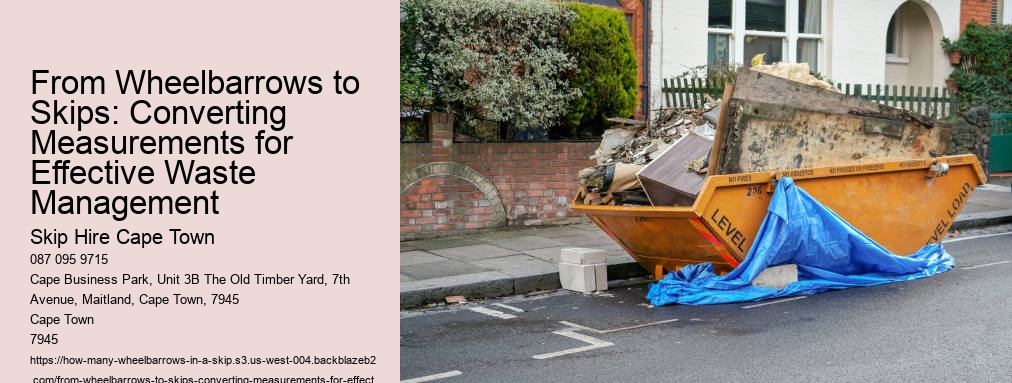
From wheelbarrows to skips: converting measurements for effective waste management is a crucial task for any business or organisation. It's important that they have the right size containers in order to dispose of their rubbish properly and safely. Having too much space can lead to over-filling and overflowing, while having too little can cause unnecessary trips back to the depot. The key is understanding how the capacity of each container differs, so you can select the right one for your needs! (Wow!)
When it comes to wheelbarrow measurements, these are generally measured in cubic feet . A standard wheelbarrow typically holds up to 3 cu ft of material, however this can vary depending on its shape and design. This means that if you're dealing with large amounts of bulky waste such as wood or bricks then you'll need a larger wheelbarrow than if you were disposing light items like paper or cardboard.
How Many Wheelbarrows In A Skip? .
On the other hand, skips come in various sizes which are usually measured in cubic yards rather than cubic feet - meaning that 1cu yd equates to 27cu ft! They range from 2cu yd mini-skips all the way up to 40cu yd roll-on/roll-off skips which are perfect for bulkier items like furniture or construction materials. Furthermore, there's also a midi skip option which falls between these two extremes at 4cu yd so this may be more suitable for smaller jobs such as garden clearances or home renovations.
Transition phrase: All things considered...
By understanding how these different units of measure work and by taking into account what type of waste needs disposing of, businesses and organisations should be able to choose the most appropriate container size for their requirements - ensuring a safer and more efficient waste management system! (Indeed!)
Estimating Waste Volume: A Guide to Assessing Skip Capacity in Wheelbarrow Units